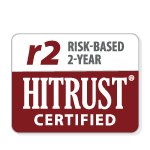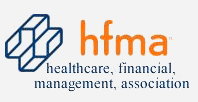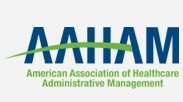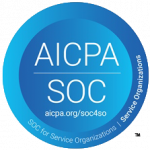
As 2025 draws to a close, healthcare organizations are taking stock of revenue cycle performance and preparing for the year ahead. For many, the end of the calendar year serves as a natural checkpoint to evaluate financial health, close out accounts, and align strategy for 2026. For hospitals operating on a fiscal year—often ending in June—this period marks a critical mid-cycle review to assess progress toward annual goals, address process gaps, and prepare for upcoming regulatory and payer shifts.
Whether your organization is closing the books or assessing mid-year performance, the same principles apply: evaluate cash flow trends, reconcile year-to-date metrics, and align forecasts with policy and reimbursement changes. Taking a proactive approach now helps ensure your team stays ahead of fiscal year-end challenges and enters 2026 with momentum.
Rising costs, payer friction, and evolving regulations continue to test healthcare finance teams—but they also present opportunities to strengthen operations. The close of the calendar year offers a valuable moment to optimize cash flow, refine processes, and reinforce the financial foundation needed to meet both fiscal and calendar year-end goals.
Below, we explore the essential focus areas for RCM teams as we close out 2025 and the key trends likely to shape the healthcare revenue landscape in the year to come.
Contact Revco to see how we can help you prepare.
Table of Contents
Looking Ahead: 5 Trends to Expect in 2026
Revenue cycle roles are often defined by manual, repetitive tasks — eligibility checks, payment posting, follow-up calls — that can feel endless. For many teams, these functions consume hours of every day, leaving little room for problem-solving, let alone optimization.
- Regulatory & Policy Turbulence
The policy environment is expected to remain active into 2026, bringing additional regulatory shifts impacting reimbursement, eligibility, and documentation. Policies affecting Medicaid redetermination, Medicare coverage, and clinical justification will require close coordination between finance, compliance, and clinical documentation teams.
What you can do now: Operational agility will be key. Processes must be adaptable to evolving payer rules and regulatory interpretations.
- Technology, Automation & AI Accelerate
The RCM technology landscape is rapidly transforming. Automation and AI tools are becoming central to revenue cycle efficiency. With $440 billion spent on healthcare administrative work every year, decision-makers are looking to embrace new advancements, including machine learning for claim scrubbing, denial prediction, and automated appeals. From automated claim edits and predictive denials management to AI-assisted appeal letters, these tools are reshaping back-office efficiency.
What you can do now: Organizations that evaluate their current technology gaps and adopt targeted automation now will enter 2026 with a strategic edge—freeing staff to focus on higher-value problem-solving and patient interaction.
Consumer expectations for transparency and convenience continue to grow. High-deductible health plans and increased coinsurance mean patients are effectively a larger payer segment. In 2026, expect more emphasis on digital engagement—automated payment reminders, self-service portals, and real-time cost estimates.
What you can do now: RCM leaders should treat patient financial engagement as a key component of the revenue strategy, not just an afterthought. Clear communication and flexible options will drive both patient satisfaction and payment performance.
- Growing Denial Risk & Clinical/Payer Partnership Dynamics
Denial management will remain a major concern in 2026 as payers continue tightening claim review and documentation requirements. The denials most likely to increase in 2026 include those tied to medical necessity, prior authorization, and eligibility errors.
What you can do now: To stay ahead, organizations will need stronger analytics, cross-department collaboration, and real-time feedback loops between clinical and financial teams. Analysis of payer behavior should be a regular focus, with well-documented monthly engagement with payer representatives to ensure timely turnaround and resolution of outliers. Having operational decision-makers actively involved in these payer meetings is essential when resolving ongoing issues—delays only increase cost to collect and account aging.
Contract review should also include a detailed analysis of underpayment recovery and a planned focus for appeals where applicable. This proactive, data-driven approach to payer management not only supports denial prevention but also helps recover missed revenue and strengthen payer relationships over time.
- End-to-End Platform Models vs Point Solutions
Fragmented systems create inefficiencies that directly affect reimbursement speed and accuracy. Many organizations are transitioning toward unified RCM platforms that integrate scheduling, billing, analytics, and collections. This shift enables data transparency and reduces manual reconciliation.
What you can do now: As your organization plans for 2026, consider whether your current systems support true end-to-end visibility—or if a platform approach could better align your teams and workflows.
Download our Revenue Cycle Management Playbook for the full checklist to prepare your healthcare organization for the upcoming year!
Timing Matters: How Can You Align RCM Strategy with Your Fiscal Cycle?
As the calendar year winds down, RCM teams should be ramping up for their mid-cycle operations. Concentrate on these key areas to maximize financial performance and set the stage for a strong start in the new year:
- Clean Up Accounts Receivable (AR): As you approach the last half of the performance year, the time to tighten AR management is now. Review outstanding balances, prioritize aging accounts, and make sure every clean claim is submitted before December closes.
- Conduct in-depth analysis of aging AR, documenting trends and work down the backlog of older accounts to prevent avoidable timely filing adjustments.
- Ensure all charges are captured correctly, coding is accurate, and claim submissions are timely.
- Verify Eligibility for the New Plan Year: Patient coverage resets every January, and that means re-verification is critical. Front-end teams should prepare now to confidently guide patients through new benefits and payment expectations.
- Proactively verify patient eligibility and insurance coverage for January onward.
- With deductible resets, plan year changes and switching payers, this is a great time to ensure accurate front‐end work.
- Develop or refine scripts for financial counseling, out-of-pocket estimates and patient responsibility engagement.
- Review call drivers with call center leadership. These early insights can highlight operational issues long before month-end data does.
- Conduct a Coding & Charge Capture Audit: Accurate coding drives compliant reimbursement. Even small corrections now can yield measurable improvements in cash flow and denial prevention next year.
- Conduct a year-end audit of coding accuracy, and proper use of modifiers, documentation of medical necessity particularly for high-risk service lines.
- Ensure that any service lines with high denial exposure (e.g., short stays, observation, readmissions, complex E/M levels) are reviewed.
- Spot check charge capture to ensure nothing slipped through the cracks in the rush of year-end volumes.
- Prevent Year-End Denials: Denials often spike at year-end as claim volumes surge and payers update policies. Submitting clean claims is more crucial than ever.
- Ensure claims for year-end services are submitted promptly and clean. Delays or errors now will push reimbursements into next year, hurting cash flow.
- Monitor payers for changes in policy (authorization, code edits, bundled services) and apply overrides or edits proactively.
- Use denial trend data to identify common rejection reasons and feed those back into front-end process improvements.
- Strengthen Patient Financial Engagement & Collections: Patients continue to shoulder more of their healthcare costs. Before deductibles reset, communicate clearly about balances and offer flexible payment options to encourage resolution.
- With patient out-of-pocket responsibility growing, now is the time to review your patient billing and engagement platform (online payments, payment plans, clear statements).
- Encourage patient payments before year-end where possible (especially if deductible resets or benefit changes apply).
- Make sure that your communication (statements, emails, phone scripts) are written clearly, especially around what changed in benefits for next year.
- Evaluate Workforce, Technology & Processes: Your mid-cycle or year-end reviews shouldn’t stop at financials. An internal “lessons learned” review can help your team carry forward best practices and eliminate inefficiencies before the next fiscal cycle.
- The year-end is a good moment to evaluate your RCM staffing model (remote/hybrid work, burnout risk, turnover) and technology stack (automation, workflow bottlenecks).
- Conduct a brief “lessons learned” after this year — what worked, what didn’t — and build improvement plans for 2026.
- Ensure your technology vendor contracts, software licensing, automation tools and dashboards are set for the new year, with any needed upgrades scheduled.
- Budget & Forecast Projections: Use this year’s performance data to refine projections for 2026. Scenario-planning now will prepare your organization for reimbursement changes, rising costs, and new technology investments in the year ahead.
- Using this year’s data, refresh your revenue cycle performance forecasts for next year: days in AR, denial rate, net collection rate, self-pay bad debt, etc.
- Build scenario plans: e.g., what happens if payer reimbursement changes, if patient responsibility increases further, if staffing costs rise.
- Share these forecasts with executive leadership to align expectations and secure support for needed investments.
- Ensure IT-supported automation initiatives stay prioritized and on schedule. Delays drive up costs, strain staff, and slow AR performance. Continuously reassess the automation roadmap and shift focus to the highest-impact technologies.
Conclusion
Whether your organization is closing out the year or approaching mid-cycle, now’s the time to assess your revenue cycle performance. Revco Solutions can help you strengthen cash flow, reduce denials, and prepare for a successful 2026.
The close of the year provides a natural point for evaluation and strategic planning. By tightening AR management, auditing coding accuracy, and improving patient engagement, organizations can strengthen financial performance before the new calendar year begins.
Looking ahead, 2026 will test the agility of revenue cycle teams. Success will depend on data visibility, workflow automation, and proactive alignment with evolving payer and patient expectations.
Let’s connect to discuss how your organization can close 2025 strong and move into 2026 with confidence.






